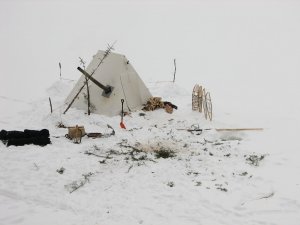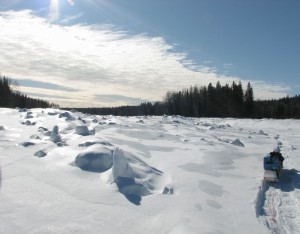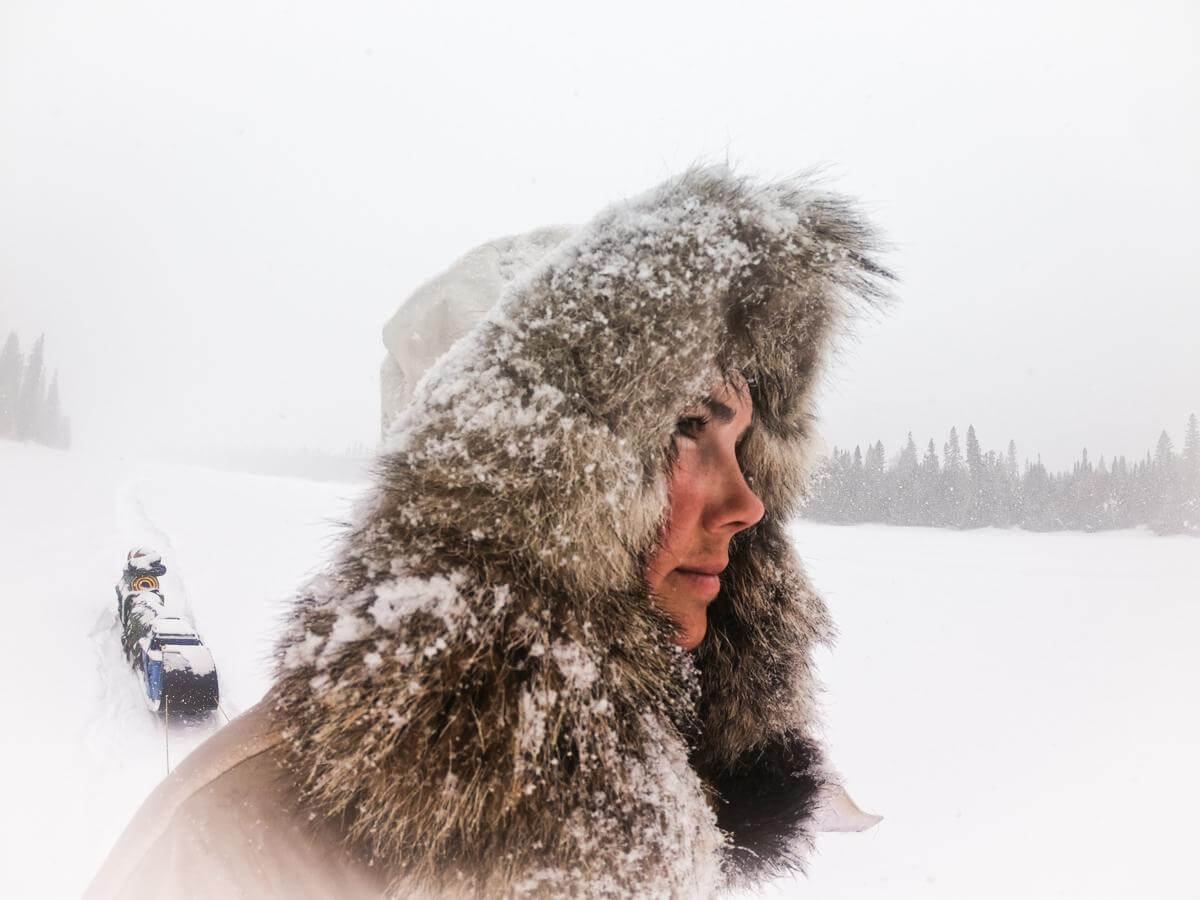‘Traditional’ winter camping can mean a variety of different things to different people, but we like to think of it as travel by snowshoe and toboggan, with nights spent in a canvas tent heated by a wood stove. Equipment choices and clothing materials are heavily influenced by the earliest European travellers of this great land, who themselves borrowed heavily from and adapted the practices of indigenous travellers. Just as Europeans developed certain adaptations to indigenous methodologies (eg, steel tools and certain woven fabrics) while maintaining the same basic principles, so too does the modern traveller make material updates while striving to uphold the best time-tested traditions (for example, plastic toboggans have largely replaced wooden ones, but the shape and functionality remains nearly unchanged). Thus, while some (but not all!) materials may have been updated over the ensuing centuries, the form and function of our tools are the same as those developed and perfected over thousands of years spent living on this land.
The decision to adopt traditional travel methods and materials is not simply one of nostalgia, instead being based more in pragmatism. Quite simply, traditional winter camping is the most comfortable, practical and safest way to travel distances, great or small, through Canada’s Boreal Forest for much of the year. Clothing made of natural materials (generally wool insulating layers with an outer cotton, windproof layer), are far superior to modern nylon materials (even the most expensive Gore-Tex fabrics), in the typically cold, dry mid-winter weather of the Boreal Forest. Buckskin and canvas moccasins keep your feet warmer, drier and more comfortable than you ever thought possible in a pair of modern boots, and large wood-framed snowshoes are lighter and provide far better flotation in deep, powdery snow than modern mountaineering snowshoes. There is a graceful synergy between all parts of the system, evidence of many generations of careful thought and refinement. Soft moccasins provide intimate feel and control of the snowshoe, and allow the use of a simple ‘Indian-hitch’ or lamp-wick style binding. The wide, overlapping shape of the snowshoe holds up the traveller through deep snow, but also packs a perfect ‘float’ or trail for the toboggan. The long (3+ metres in length), narrow toboggan glides behind the traveller(s) in the snowshoe float, bending and flexing to adapt to undulating terrain and easily handling a hundred kilograms or more of food and equipment.
While I mentioned earlier the desire to adapt traditional winter camping methods for pragmatic reasons, in practice one cannot help but be emotionally affected by the historical link involved. Whether walking hundreds of metres or hundreds of kilometres, the quiet, unbroken blanket of snow you travel through will be in many ways identical to the conditions First Nations and early explorers would have encountered. After a few days on a river or chain of lakes it becomes easy to feel as if you have stepped back in time, to feel as if you are experiencing, and perhaps even beginning to understand what it must have been like to live in an earlier time, and to appreciate more fully every culture that has come before to shape, and be shaped by our shared natural heritage.
If you are interested in joining us on a winter trip, check out our “Guided Trips” page, or send an email to: info@lureofthenorth.com.



